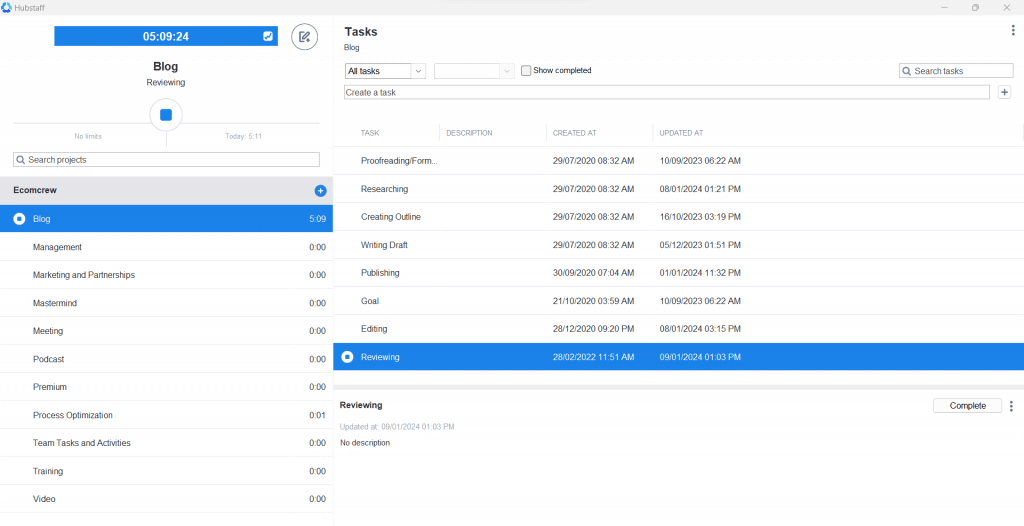How and When to Hire Your First Virtual Employee
In today's digital age, e-commerce has become an essential part of the business landscape. As an e-commerce entrepreneur, you understand the importance of efficiency and scalability in order to stay competitive. One way to achieve this is by hiring a virtual employee.
A virtual employee is a remote worker who can handle various tasks for your e-commerce business, allowing you to focus on core activities. In this article, we will explore the benefits of hiring a virtual employee, compare them to local employees, discuss the hiring process, and provide tips for effectively managing and communicating with your virtual employee.
E-Commerce Businesses and How Virtual Employees 10X Success
Hiring a virtual employee for your e-commerce business comes with numerous benefits. Firstly, it allows you to tap into a global talent pool. Unlike hiring locally, which limits you to a specific geographic area, hiring a virtual employee opens up possibilities of finding the best talent regardless of location. This can result in accessing specialized skills that may not be available locally, giving you a competitive edge.
Secondly, hiring a virtual employee can significantly reduce costs. With a virtual employee, you won't have to worry about expenses such as office space, equipment, and utilities. Additionally, virtual employees often work on a contractual basis, allowing you to save on employee benefits and taxes. These cost savings can be reinvested into other areas of your e-commerce business, such as marketing or product development.

Lastly, virtual employees offer flexibility and scalability. As your e-commerce business grows, you can easily scale up by hiring more virtual employees. This scalability allows you to adapt to changing business needs and accommodate increased workload without the constraints of physical office space. Moreover, virtual employees can often work flexible hours, catering to different time zones, which can be advantageous for customer service and round-the-clock operations.
Tit-for-Tat: Local versus Remote Employment
While hiring a virtual employee has its advantages, it's important to consider the pros and cons when comparing them to local employees.
Hiring a local employee provides the benefit of face-to-face interactions and immediate availability for on-site tasks. This can be crucial for certain roles that require physical presence, such as warehouse management or quality control.

On the other hand, virtual employees offer more flexibility in terms of working hours and location. They can work from anywhere in the world, eliminating geographical limitations. This can be particularly advantageous if you are looking for specialized skills that may not be available locally. However, communication and coordination may require additional effort due to the lack of physical proximity.
Furthermore, it's essential to consider the cultural and language differences that may arise when hiring virtual employees from different countries. These differences can impact productivity and understanding, so it's crucial to establish clear communication channels and provide cultural sensitivity training to ensure effective collaboration.
How to Hire a Virtual Assistant
Now that we have explored the benefits and compared virtual employees to local employees, let's delve into the process of hiring your first virtual employee. The first step is to determine the specific skills and responsibilities needed for the role. Consider the tasks that you want to delegate and identify the qualifications and experience required. This will help you create a targeted job description and attract suitable candidates.
Next, you need to decide where to find virtual employees for your e-commerce business. There are various platforms and websites dedicated to connecting businesses with remote workers. Some popular options include freelancing platforms like Upwork or specialized virtual employee agencies. As to geographical location, the world is literall your oyster:
- The Philippines is a top destination for virtual assistants. English proficiency, cultural compatibility, and a strong work ethic make Filipino virtual employees highly sought after.
- India is a hub for IT and tech talent. You can find virtual employees skilled in web development, programming, and various technical tasks.
- Eastern European countries offer a blend of technical skills and cost-effectiveness. They are excellent choices for IT-related roles.
- Latin American virtual employees often share a time zone with North American e-commerce businesses. This proximity can enhance communication and collaboration.
Once you have shortlisted potential candidates, it's time to conduct interviews and select the right virtual employee. Conducting virtual interviews is similar to in-person interviews, but it's important to adapt your approach to the remote setting. Utilize video conferencing tools to assess the candidate's communication skills, professionalism, and cultural fit. Additionally, consider conducting skills tests or requesting work samples to evaluate their capabilities.
After selecting the ideal candidate, the next step is onboarding and training. Provide thorough documentation and resources to familiarize your virtual employee with your e-commerce business, its processes, and tools. Establish clear guidelines and expectations to ensure a smooth transition and effective collaboration. Regular check-ins and feedback sessions are crucial during the onboarding phase to address any questions or concerns and provide guidance.
(Virtual) Communication is Key
Managing a virtual employee requires effective communication and coordination. Here are some tips to ensure successful collaboration:
- Utilize project management tools: Implementing project management tools like Trello or Asana can help you assign tasks, track progress, and maintain transparency. These tools provide a centralized platform where you can communicate, share files, and monitor deadlines.
- Schedule regular check-ins: Set up regular meetings with your virtual employee to discuss ongoing projects, address any challenges, and provide feedback. These check-ins can be conducted through video conferences or voice calls, depending on your preference.
- Foster a culture of trust: Trust is essential when managing a virtual employee. Delegate responsibilities and empower your virtual employee to make decisions within their scope. Providing autonomy will not only boost their morale but also enhance productivity and creativity.
- Establish clear communication channels: Define the preferred communication channels for different types of communication. Whether it's email, instant messaging, or video conferencing, ensure that you and your virtual employee are on the same page to avoid miscommunication or delays.

Challenges of Remote Work Environments
Remote work comes with its own set of challenges, but with proper strategies, you can overcome them and foster a productive work environment. Here are some common challenges and corresponding solutions:
- Communication barriers: Use video conferencing tools to facilitate face-to-face communication and build rapport. Encourage open and transparent communication to bridge any language or cultural gaps.
- Time zone differences: Establish clear expectations regarding availability and working hours. Use scheduling tools to coordinate meetings and ensure that both parties are aware of each other's time zones.
- Monitoring productivity: Implement productivity tracking tools to monitor the progress of tasks and ensure accountability. Focus on deliverables and results rather than micromanaging the process.
- Building team cohesion: Promote team bonding through virtual team-building activities or informal virtual gatherings. Encourage collaboration and foster a sense of belonging despite the physical distance.
If You Can’t Measure It, You Can’t Improve It
To measure the success and impact of your first virtual employee, it's important to establish key performance indicators (KPIs) and set clear goals. These can include metrics such as increased sales, improved customer satisfaction, or reduced response time. Regularly evaluate the performance of your virtual employee against these KPIs and provide constructive feedback. Celebrate achievements and address any areas that need improvement. By tracking the impact of your virtual employee, you can make informed decisions regarding their role and future hiring.
Conclusion
Hiring your first virtual employee can unlock tremendous growth opportunities for your e-commerce business. By harnessing the benefits of virtual employees, such as access to a global talent pool, cost savings, and flexibility, you can scale your operations and stay ahead of the competition. Effectively managing and communicating with your virtual employee, overcoming remote work challenges, and measuring their impact are crucial steps in maximizing the potential of virtual employees. Embrace the art of hiring virtual employees, and watch your e-commerce business thrive in the digital landscape.



